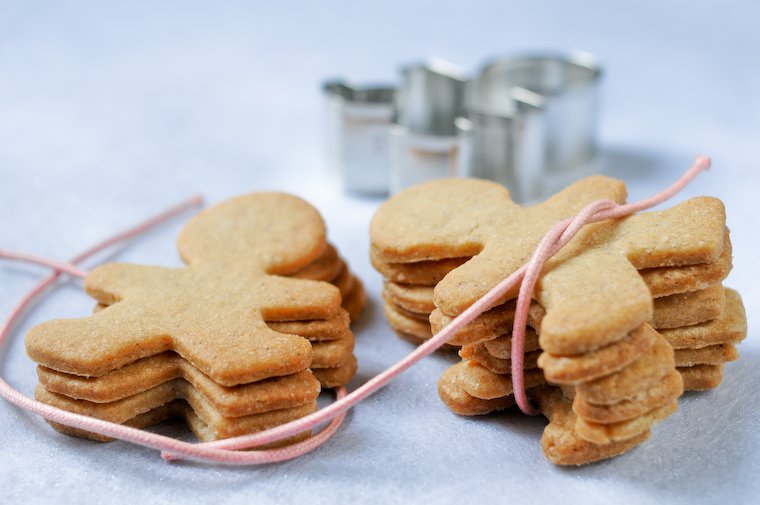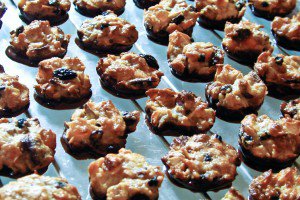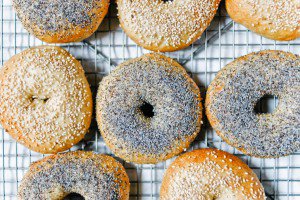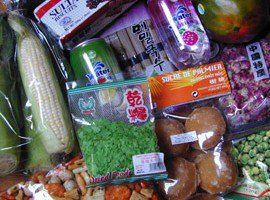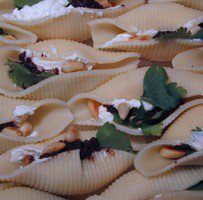Biscuits de Noël
Laurence is one of my best and oldest friends. I met her when I was fourteen, on our first day of high school, and soon we were inseparable, so alike in so many ways that people sometimes mistook us for sisters.
I loved going to her house after school. For one thing, there was a television there, which wasn’t the case at my parents’, so there was always the electrifying prospect of maybe catching one of those shows everyone else was watching at the time.
But aside from that, the house felt like a big happy place: Laurence had two (actual) sisters, and her mother, Christine, took care of small children at home, so there were a lot of comings and goings, conversations, people at the door, and girls shouting things down the stairwell.
Laurence and I would first drop by the bright kitchen and raid the cabinets to make ourselves a snack — the essential goûter — then we would dash up the two flights of stairs and shut the door of her room behind us so we could talk and talk and talk, the way fourteen-year-olds do.
There was often bread and nutella in that kitchen, or sometimes a yogurt cake, and also very good homemade vanilla yogurts made with whole milk. And every year, around Christmastime, there was a tin of biscuits de Noël that Christine had baked.
Thin, crisp, and delicately buttery with just a whisper of cinnamon, these were simple cookies, deceptively plain in appearance, but they made you close your eyes and listen to the tiny choir bursting into an aria inside your mouth.
Thin, crisp, and delicately buttery with just a whisper of cinnamon, these are simple cookies, deceptively plain in appearance, but they make you close your eyes and listen to the tiny choir bursting into an aria inside your mouth.
A decade later, it finally dawned on me that I should just ask Christine for her recipe, which she kindly agreed to share. She noted that she made them just once a year, in the days leading up to Christmas, and I follow her lead, even though they’re such fantastic little sablés I would gladly inhale them year-round.
It is an easy recipe, which I’ve altered only marginally, lowering the sugar a little, adding salt, and replacing the tablespoon of rum with a tablespoon of my vanilla extract. The dough needs to rest overnight for the flavors to develop, and then it’s a simple matter of rolling it out thinly, cutting shapes, and baking batch after batch, while pretending to be in a movie about a small-scale cookie factory.
This year’s production is undoubtedly the tastiest I’ve ever baked: I made it with the flour they sell at the Poilâne bakery, the very same stone-ground flour they use for their bread, yes, but also their legendary punition cookies. As a result, my biscuits de Noël bear a strong flavor resemblance to them, which is exactly as I’d hoped.
Naturally, you could choose to ice the cookies if that’s your thing, but I am not a decorated cookie kind of girl, in case you hadn’t noticed, and I love the quiet look of these. And I think they make a lovely giftable treat as is, stacked in even little piles in a box lined with tissue paper.
And for more edible gift ideas, check these recipes:
~ Chestnut pecan biscotti,
~ Homemade granola,
~ Very ginger cookies,
~ Chocolate clusters,
~ Homemade vanilla extract,
~ Matcha shortbread cookies,
~ Chocolate-dipped hazelnut marbles,
~ Homemade tisane mix,
~ Rose or chocolate marshmallows.
Happy Holidays!

Have you tried this? Share your pics on Instagram!
Please tag your pictures with #cnzrecipes. I'll share my favorites!
Ingredients
- 420 grams (14 3/4 oz, about 3 1/4 cups) all-purpose flour, plus more for dusting (I used Poilâne T80 flour)
- 280 grams (9 3/4 oz, 1 cup + 6 tbsp) sugar (I use unrefined blond cane sugar)
- 1/2 teaspoon ground cinnamon (I use fresh cinnamon from Cinnamon Hill)
- 1/2 teaspoon fine sea salt (I use unrefined grey salt)
- 2 large eggs
- 1 tablespoon homemade vanilla extract
- 250 grams (8 3/4 oz, 1 cup + 2 tbsp) best-quality unsalted butter, diced and softened (I leave it out for about 2 hours at room temperature)
Instructions
- Prepare the dough at least 8 hours in advance, and up to a day. In the bowl of a stand mixer fitted with the paddle attachment, combine the flour, sugar, cinnamon and salt. Add the eggs and the vanilla, and mix until combined.
- Add the butter, a small lump at a time, and mix until incorporated before adding the next. The dough will be soft; it will firm up in the fridge. (If you want to make the dough by hand, I recommend you imitate Lionel Poilâne in this video, as he demonstrates how he makes punitions.)
- Divide the dough in four equal(ish) pieces, shape each of them into a thick disk, cover with plastic wrap, and refrigerate for at least 8 hours, and up to a day.
- Line cookie sheets with silicone baking mats or parchment paper. (For optimal productivity, work with three cookie sheets, so at any given time you can have one in the oven, one that you're working on, and one that's cooling.)
- Preheat the oven to 160°C (320°F).
- Remove one disk of dough from the fridge. On a generously floured work surface (ideally, marble, so the dough remains cold for as long as possible) and with a generously floured rolling pin, roll out the dough to a little under 3mm (1/8") in thickness. To prevent the dough from sticking to the work surface, the trick is to rotate it by a quarter of a turn between each pass of the rolling pin, and throw a little more flour underneath as soon as it seems like it wants to stick.
- Bonus tip: I use two chopsticks as "rails" under the rolling pin to roll out the dough evenly at first. I then remove them to roll out the dough more thinly.
- Cut out the shapes of your choice using a cookie cutter, and arrange them on a cool cookie sheet. The cookies won't really expand while baking, so it's okay to crowd them a little (within reason). Gather the scraps into a ball, handling it minimally to prevent overheating, and re-roll it as needed to cut out more shapes. If you find it is becoming too soft, place it back in the fridge to firm up again.
- Insert the cookie sheet in the middle of the oven and bake for 12 to 15 minutes, until pale golden. The cookies will still feel a little soft, though you should be able to lift one on the blade of a knife. If the cookie cutter shape you've used has weak points (such as the neck in the case of my little guys), let the cookies rest for 1 or 2 minutes on the baking sheet before transferring them to a rack to cool.
- Repeat with the remaining pieces of dough, making sure you let each cookie sheet cool completely before reusing it for another batch.
- The cookies will keep for up to a month in an airtight container at room temperature.
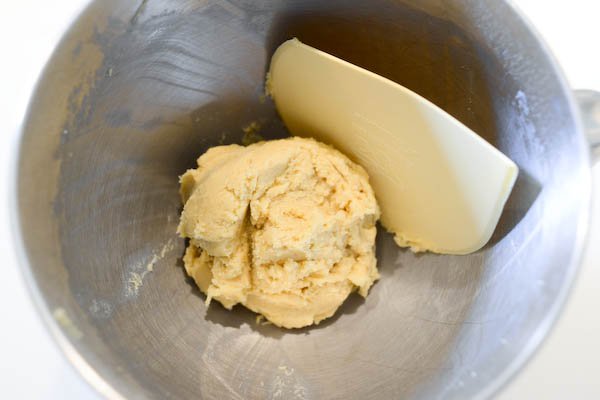
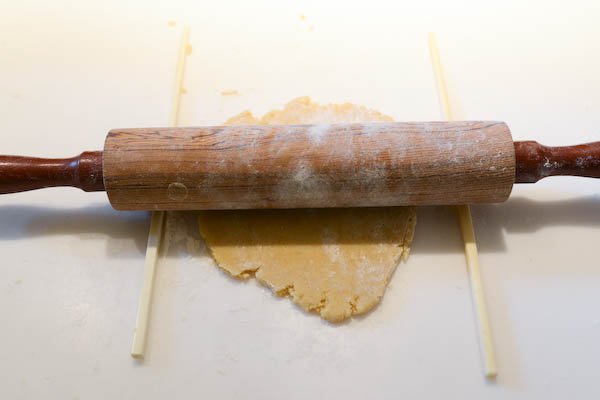
Notes
Naturally, the yield depends on the size of your cookie cutter: I used one that's 7 cm (2 3/4") in height, and got twelve dozen, for a total cookie weight of 960 grams (2 pounds 2 ounces).


